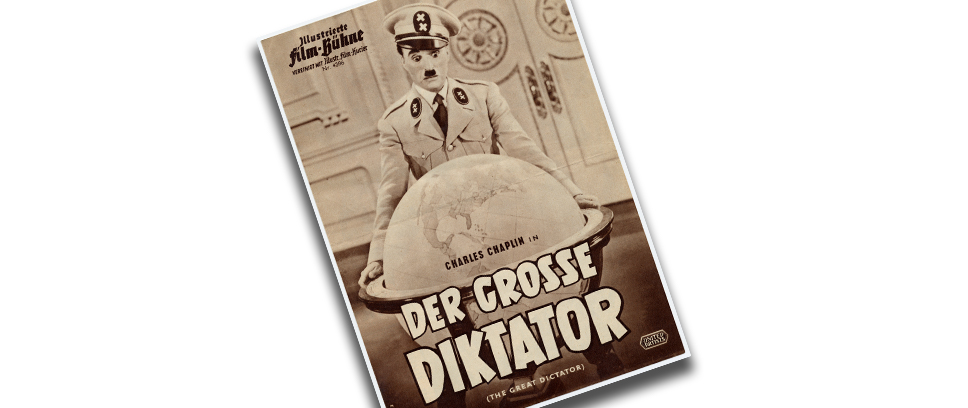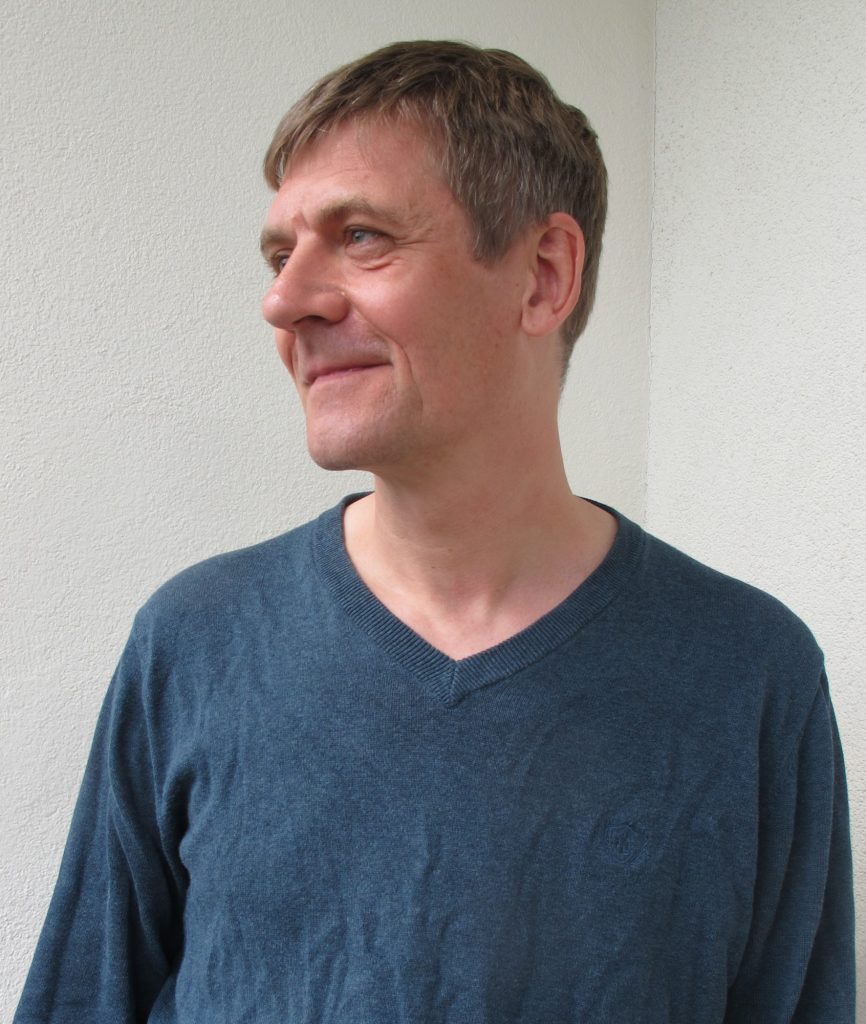
Wagner’s Music and the Hollywood Sound
Steffen Vogt | 21 June 2022
Even today, numerous Hollywood films still include excerpts from the music dramas of Richard Wagner. Just how the composer’s music found its way onto the big screen is explained by Steffen Vogt in our blog, accompanying the exhibition “Richard Wagner and the Nationalization of Feeling”.
‘Liebestod’, the ‘Wedding March’ and ‘The Ride of the Valkyries’: musical quotations from Richard Wagner’s operas, suitably packaged for the silver screen, can be found in an almost endless succession of Hollywood movies. That said, however, the fact that his music has been selectively plucked and plundered in the interests of adding musical value to films is not proof of any particular affinity between Wagner and the cinematic medium. Wagner shares this fate with most composers of classical music. But it is a matter of historical fact that Wagner’s compositional technique has had an immense influence on the typical sound of Hollywood film music. And Wagner’s concept of the Gesamtkunstwerk, the ‘total artwork’, which he developed in his writings on aesthetics, is crucial to film.
Orchestral Sound and Leitmotifs
Since as far back as the era of silent movies, the catalogue of classical music has been trawled for musical quotations suitable for use as ‘mood music’ for films. These lifted quotations were provided in the form of compendia to the cinema pianists of the day, listed according to the typical movie scenes they could be used to enhance (‘morning mood’, ‘wild chase’, ‘love scene’, etc.). Working with quotations from the classical music repertoire continued with the ‘talking pictures’. The studios soon realised that the public were not at all disconcerted by hearing background music in scenes where there was no narrative explanation for its presence. Once this had been established, the profession of film composer really took off. From then on, a film without a score was unthinkable. The work of film composers became a fundamental part of film production and recycling quotations from classical music remained part of their practice.
Wagner’s influence on the composition of film music is particularly evident in two areas: orchestral sound and the use of leitmotifs. This influence is mostly attributable to the fact that many of the composers who later made a name for themselves in Hollywood were trained in Europe before emigrating to the USA. These included, for example, Max Steiner (King Kong, 1933), Franz Waxman (Rebecca, 1940), and Erich Wolfgang Korngold (The Adventures of Robin Hood, 1938). The European Late Romantic roots of these composers formed the basis on which the typical Hollywood sound developed. This was also how elements of Wagner’s compositional technique found their way into film music. Passages from Wagner’s operas, like the overture to Lohengrin or the opening chords of Rheingold, were studied as examples of how music could function as an independent narrative element, thanks to the effective use of orchestration.
Wagner’s inspired use of characteristic melodies or musical phrases to signal particular figures or objects in the on-stage action – generally known as the ‘leitmotif technique’ – was also copied in film music. But where Wagner tried to integrate these leitmotifs into his scores in the most subtle way possible, in film music they have usually been employed simply as catchy and easily recognisable musical phrases. It has only been in recent decades that film composers like John Williams (Star Wars) and Howard Shore (Lord of the Rings) have begun to use leitmotifs more in the way that Wagner used them. This may have something to do with the fact that the epic scale of these film projects – or franchise cycles – allowed the composers sufficient room to develop more complex musical structures. If one looks, then, at the entire 100-year history of film music, the most striking aspect is the lingering dominance of the Late Romantic ideal.
The ‘Wedding March’ and the ‘Ride of the Valkyries’
In this recycling of Wagner’s music in the form of film-music quotations, two pieces appear particularly often, and the difference between them could not be more striking. On the one hand there is the bridal march from Lohengrin, heard in practically every Hollywood wedding scene – without the general public usually being aware that it was actually composed by Wagner. On the other hand, we have the ‘Ride of the Valkyries’, which since the 1970s has become a sort of musical shorthand for caricaturing the moral hollowness of Nazi self-glorification. The history of the cinematic exploitation and interpretation of the ‘Ride of the Valkyries’ is a particularly instructive example of the interpretative power of cinema in the context of pop culture. The musical excerpt became permanently rooted in popular cultural memory when it was used in Francis Ford Coppola’s Apocalypse Now (1979) as infernal background music for the scene in which a helicopter squadron, reminiscent of the riders of the apocalypse, attack a Vietnamese village. Just a year later, in the film Blues Brothers, it was used to caricature Nazi hubris, blaring out in a scene during an exaggerated car chase involving a gang of Nazis.
It was not until 2008, in a Japanese anime film, that this persistent Hollywood interpretation of the ‘Ride of the Valkyries’ was overwritten: in Ponyo, adapted string passages from the music underline the urge for freedom and love of life of a small mermaid who is determined to become human. Here, Wagner’s music is reconnected, completely without irony, with the composer’s original intention. In their choice of music, the filmmakers seem to have been perfectly aware of the analogy with the fate of the Valkyrie in the Ring: at one point, we learn that Ponyo’s real name is Brunhilde.
It is by no means true, then, that in the world of film, Wagner’s music is only used as cinematic shorthand for exaggerated heel-clicking and fascism. As early as in Chaplin’s The Great Dictator (1940), we have a perfect example of the ambivalent way musical quotations from Wagner’s works are used in cinema. In this film we hear the overture to Lohengrin, both as the musical accompaniment to the famous dance scene with the inflatable globe (where it serves to caricature Hitler’s delusions of grandeur) and also, quite without irony, in the closing scene, where Chaplin makes his plea for tolerance and peace.
Film as Total Artwork?
Cinema is a medium in which many different artistic disciplines work together. In addition to skills already employed in opera – writing narrative as dialogue, acting, scenography, mise-en-scène and set design, combined with music and possibly dance – there are new ones, like lighting, composition, and editing. The complexity of the film-production process does not, however, mean that the medium of film can be seen as a realisation of Wagner’s concept of the total work of art. According to his writings on the subject, the artwork of the future – the total artwork – is precisely not simply a matter of cooperation between the individual arts at a technical level. The total artwork arises only from the complete integration of those arts, whose separate existence at that point disappears. Wagner developed his ideas about the total artwork in two essays which he wrote in Zurich in 1849.[1] It is clear from these that what he is postulating is not merely a combination of individual arts but, rather, a model for a utopian society – one in which the experiences of dissociation and social atomisation typical of contemporary society would be overcome. The integrative approach of these essays appears to be not only a reaction to the dashed hopes of the revolution of 1848, but also a typically Romantic reaction to the experience of alienation in the industrial age.
You can see and hear some of these film excerpts in the documentary Wagner au Cinéma by arte.
Literature:
Jan Drehmel, Kristina Jaspers, Steffen Vogt (eds): Wagner Kino. Spuren und Wirkungen Richard Wagners in der Filmkunst. Hamburg 2013.
Jeongwon Joe, Sander L. Gilman (eds): Wagner & Cinema. Bloomington & Indianapolis 2010.
[1] These were the essays ‘Kunst und Revolution’ (Art and Revolution) and ‘Das Kunstwerk der Zukunft’ (The Art Work of the Future). Both published in Richard Wagner: Sämtliche Schriften und Dichtungen. Leipzig (no year), Vol. 3.
|
|
Steffen VogtSteffen Vogt holds a PhD in literature. In 2013, he curated the Wagner Kino series of films and events at the Zeughauskino in Berlin, in collaboration with Kristina Jaspers and Jan Drehmel. |
